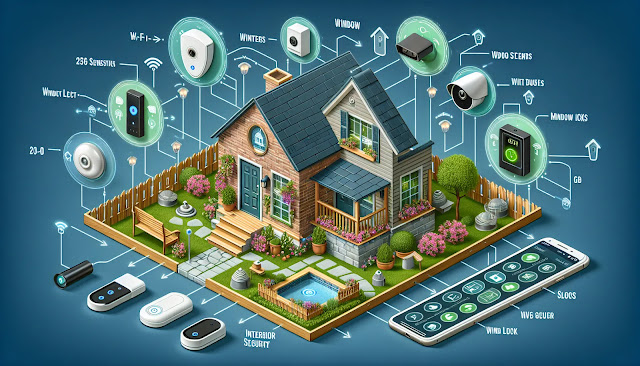Enhancing Home Security: A Step-by-Step Guide to Creating Your Own System
Home Security Setup
Welcome to our step-by-step guide on enhancing home security and creating your own system. In today's world, ensuring the safety of your home and loved ones is of utmost importance. With the advancements in technology, it has become easier than ever to take matters into your own hands and implement a robust security system tailored to your specific needs.
Whether you live in a house, apartment, or condominium, this guide will provide you with the necessary knowledge and tools to fortify your premises against potential threats. By following these steps, you can have peace of mind knowing that you have taken proactive measures to protect your home.
Step-by-Step Guide
Creating your own home security system may seem like a daunting task, but with our step-by-step guide, it becomes a manageable and rewarding endeavor. By systematically following these steps, you will be able to enhance your home security:
1. Assess Your Security Needs
The first step in creating your own home security system is to assess your specific needs. Consider factors such as the size of your property, the number of entry points, and the level of crime in your area. By understanding your unique requirements, you can make informed decisions when selecting security devices and features.
2. Research Security Systems
Take the time to research different types of security systems available in the market. From basic alarm systems to advanced smart home security solutions, there is a wide array of options to choose from. Consider factors such as ease of installation, reliability, and compatibility with other devices you may already own.
3. Choose the Right Security Devices
Based on your needs and research, select the appropriate security devices for your home. These may include:
- Surveillance cameras: Install cameras in strategic locations to monitor your surroundings. Opt for high-resolution cameras with night vision capabilities for crystal clear footage.
- Entry sensors: Place sensors on doors and windows to detect any unauthorized entry. These sensors trigger an alarm or notify you when a breach occurs.
- Motion detectors: Install motion detectors to detect movement in specific areas of your home. This is particularly useful in large properties or when you are away for an extended period.
- Smart locks: Upgrade your traditional locks with smart locks that allow you to lock and unlock your doors remotely. Some smart locks also offer features like temporary access codes and activity logs.
- Security alarms: Consider installing a loud security alarm that can notify you and your neighbors in case of a break-in.
4. Set up a Centralized Control Hub
To streamline and manage your security system effectively, it is advisable to set up a centralized control hub. This hub acts as the brain of your system, allowing you to monitor and control all the connected devices from a single interface. Choose a control hub that is user-friendly and offers advanced features like mobile notifications and remote access.
5. Install and Configure the Security Devices
Once you have acquired all the necessary security devices, it's time to install and configure them. Follow the manufacturer's instructions carefully and ensure that each device is placed in an optimal location for maximum effectiveness. Configure the devices according to your preferences and test them to ensure they are working correctly.
6. Enhance Physical Security
While electronic security devices play a crucial role in safeguarding your home, it's equally important to enhance physical security measures. Consider reinforcing doors and windows, installing outdoor lighting, and creating the illusion of occupancy when you are away. These measures act as deterrents and make your home less attractive to potential intruders.
7. Establish Security Protocols
Developing security protocols for your household ensures that everyone is aware of the best practices and can effectively utilize the security system. Educate your family members about alarm codes, arming and disarming procedures, and emergency protocols. Regularly review and update these protocols to adapt to changing circumstances.
8. Monitor and Maintain the System
Once your home security system is up and running, it's crucial to regularly monitor and maintain it. Check the status of your devices, replace batteries when needed, and ensure that all components are functioning properly. Additionally, stay informed about the latest security trends and updates to ensure that your system remains up to date.
Increase Home Security
Enhancing your home security is an ongoing process. In addition to following our step-by-step guide, here are a few additional tips to further increase security:
- Use timers to turn lights on and off when you are away to create the illusion of occupancy.
- Trim hedges and shrubs near windows and entrances to eliminate potential hiding spots for intruders.
- Consider installing a security alarm sign or surveillance camera decals even if you don't have a security system. This can act as a deterrent.
- Upgrade to smart home automation systems that allow you to control lighting, thermostats, and other devices remotely.
- Join or form a neighborhood watch program to keep a collective eye on suspicious activities.
- Secure your Wi-Fi network with a strong password and enable encryption to protect against unauthorized access.
Remember, when it comes to home security, being proactive is key. By taking the necessary steps to fortify your home, you are putting the safety of your loved ones first. So don't wait any longer, follow our comprehensive guide and create your own home security system today!





